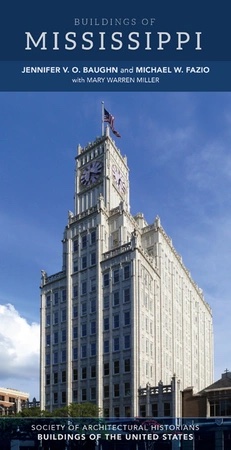
Yazoo City’s streetcar from downtown to Canal Street and north along Grand Avenue to 15th Street only survived from 1909 to 1918, but it helped establish the Lintonia Addition centered on Grand Avenue. At 526 E. Canal Street is the Moderne former Yazoo City High School (1939, Overstreet and Town; now the Boys and Girls Clubs) and its International Style gymnasium (1953; R. W. Naef). Detroit architect Elijah E. Myers designed the Queen Anne Payne-Seward House (1891; 118 Grand) giving it a profusion of textures and materials, bay windows, a wraparound porch, and a corner turret. Its exuberance contrasts with the simple geometric forms of the Prairie Style J. F. Barbour House (1915, E. J. Hull; 225 Grand). Author Willie Morris grew up in the side-gabled galleried cottage at 615 Grand Avenue. He recalled it in his memoir, North Toward Home (1967) as “set in a big yard with walnut, elm, and pecan trees.”
Demonstrating Grand Avenue’s continuing cachet after World War II, First Baptist Church moved from downtown to this new thousand-seat modernist building (1957; Dean and Pursell; 328 Grand). The building relies for its Christian symbolism on the gabled facade’s gold aluminum screen in a design of three crosses and the rear tower’s slender, aluminum spire.






